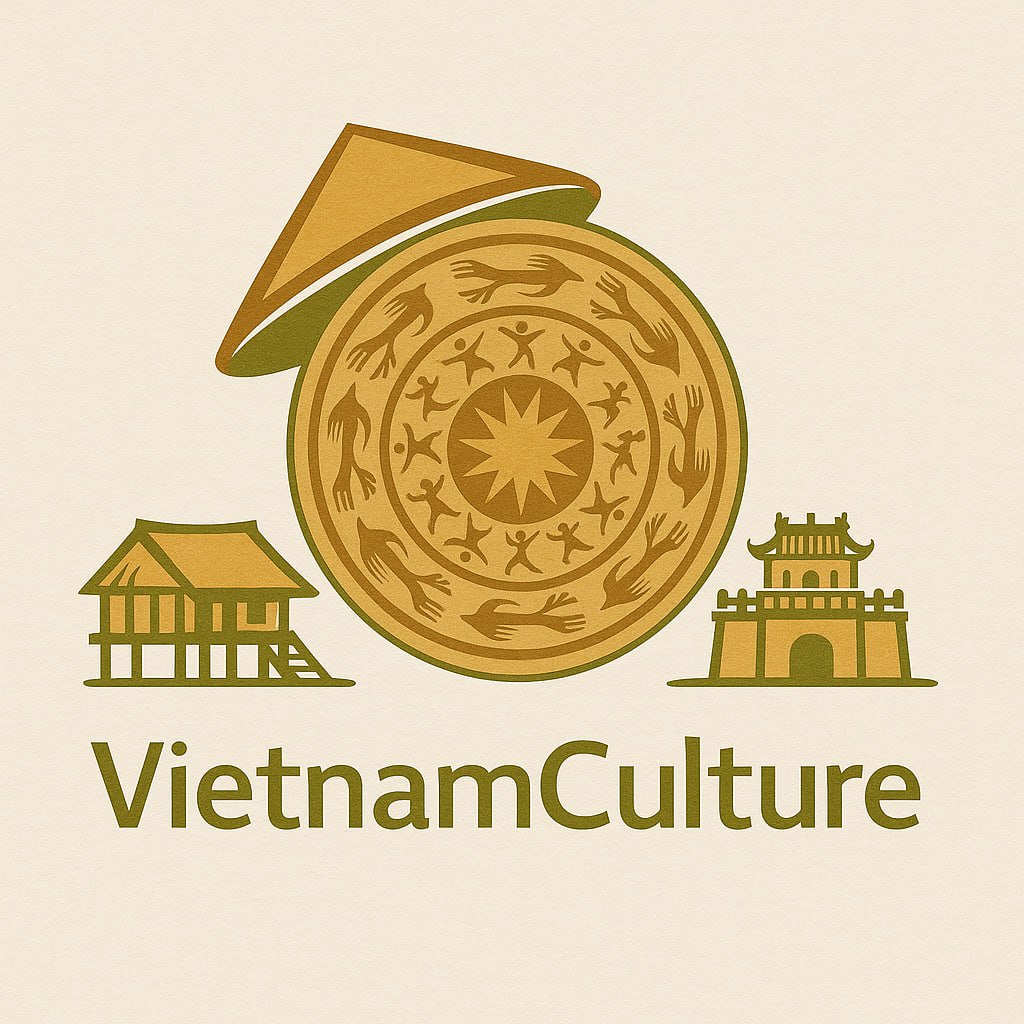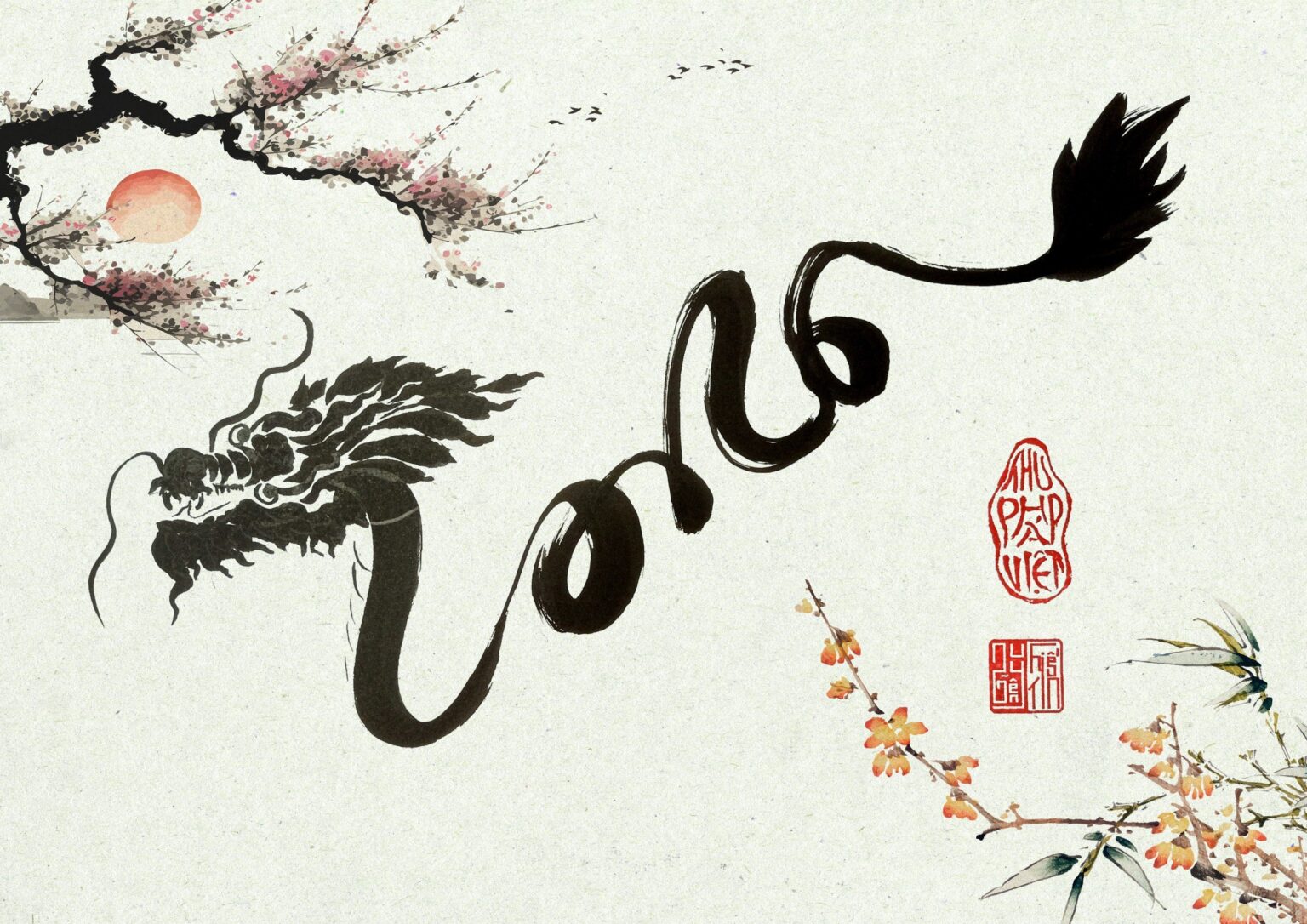Vietnam is known for its delicious food, breathtaking landscapes, and rich cultural traditions. But one of the most poetic and symbolic expressions of Vietnamese culture is often overlooked: Vietnamese calligraphy.
More than just beautiful handwriting, Vietnamese calligraphy is a visual art form, a medium for storytelling, philosophy, and personal expression. It bridges the past and the present, blending ancient brush techniques with the modern Vietnamese Latin alphabet.
Whether you’re a traveler, artist, or simply curious about Asian culture, this guide will take you deep into the history, meaning, and beauty of Vietnamese calligraphy—an art form that captures the spirit of a nation, one stroke at a time.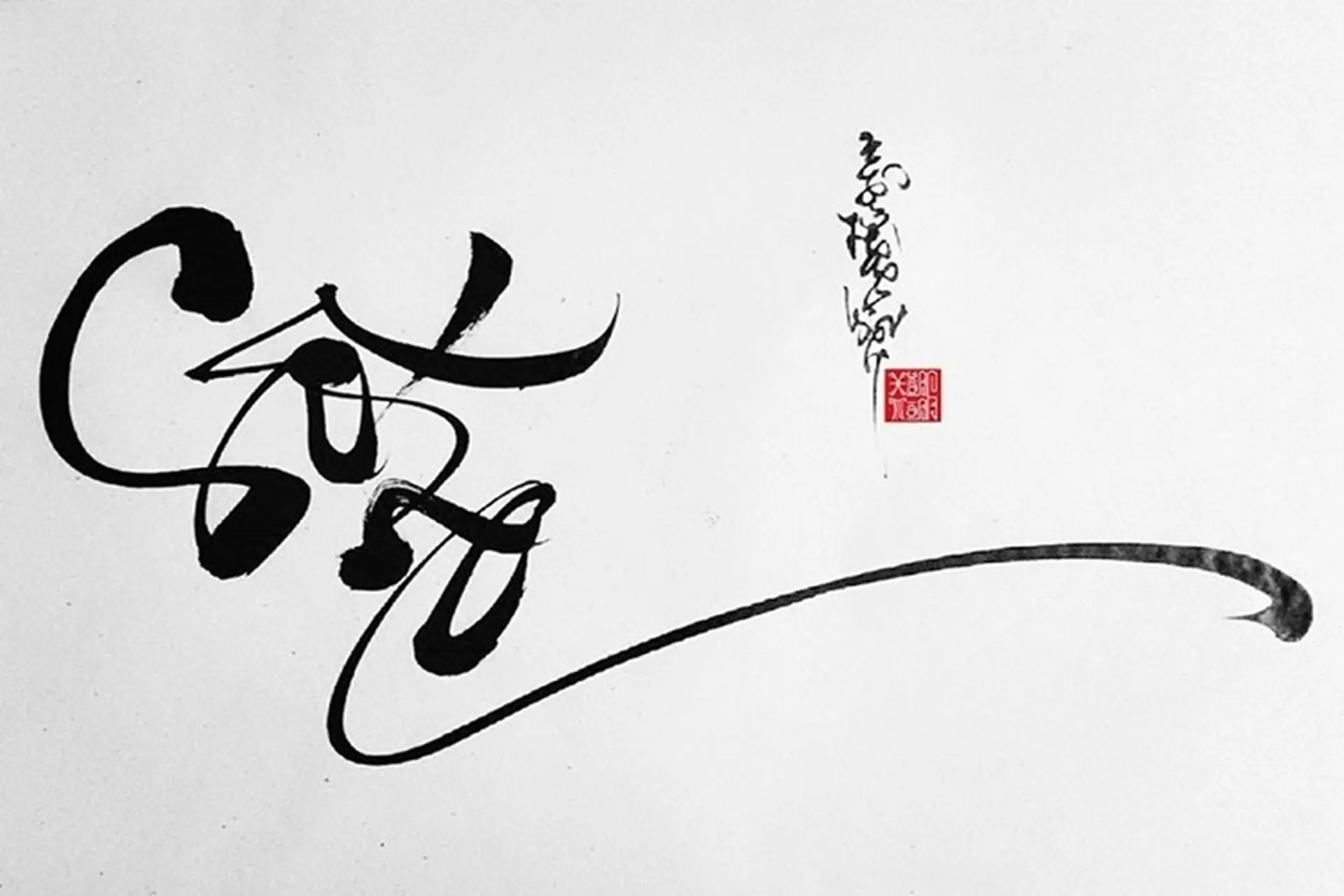
1. What Is Vietnamese Calligraphy?
Vietnamese calligraphy refers to the artistic creation of words and phrases using stylized brush strokes. Traditionally performed with a calligraphy brush, ink, and rice paper, the practice originated from Chinese calligraphy but has evolved to embrace Vietnam’s unique language and identity.
Today, Vietnamese calligraphy exists in two main forms:
- Traditional calligraphy, written in Chinese characters (Chữ Hán) or Chữ Nôm, an old script developed to represent Vietnamese sounds.
- Modern Vietnamese calligraphy, using the Latin-based Quốc ngữ script, which is the official writing system in Vietnam today.
Despite the change in alphabets, the essence remains: each piece is a reflection of the writer’s emotions, wisdom, and philosophy.
2. A Brief History of Vietnamese Calligraphy
From Ancient Times to Modern Letters
Vietnamese calligraphy began over 2,000 years ago during Chinese occupation. Scholars and monks used Chinese characters for poetry, education, and official documentation. This practice laid the foundation for a deep cultural respect for written language and penmanship.
By the 13th century, Vietnam created Chữ Nôm, a modified form of Chinese characters to represent the Vietnamese spoken language. Many classical Vietnamese poems and folk tales were written in this script.
However, by the early 20th century, Quốc ngữ, the Latin-based script introduced by missionaries, replaced both Chinese and Chữ Nôm in everyday use. Vietnamese calligraphy adapted again—this time, artists used Latin letters but maintained traditional calligraphic tools and principles.
This creative shift marked the birth of modern Vietnamese calligraphy—an art form that feels both ancient and refreshingly contemporary.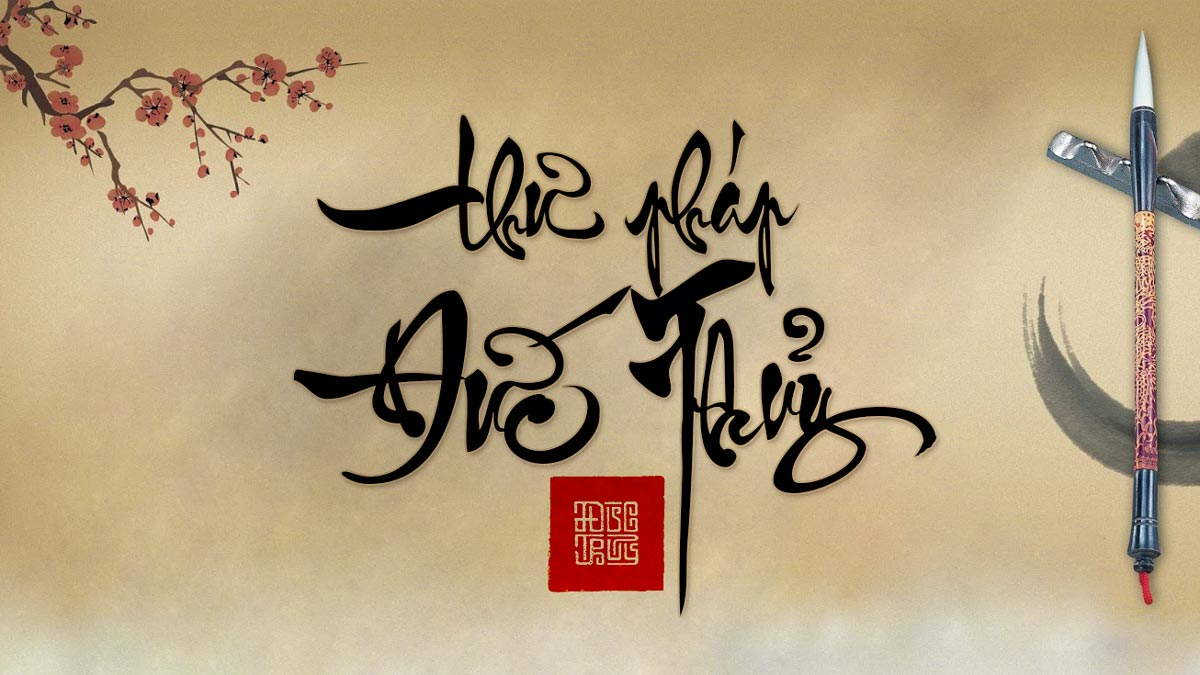
3. The Tools and Materials of Vietnamese Calligraphy
Just like traditional East Asian calligraphy, Vietnamese calligraphy typically uses:
- Brush (bút lông): Made from animal hair, used to control line thickness and fluidity.
- Ink (mực tàu): Usually black, but modern calligraphers use a variety of colors to enhance emotion and symbolism.
- Paper (giấy dó or rice paper): Absorbent and textured, creating a natural, artistic feel.
- Seal (con dấu): A red ink stamp with the artist’s signature or studio name.
More recently, calligraphy has been applied to wood panels, ceramic tiles, fabric, glass, even fruit and walls—turning traditional writing into functional or decorative design.
4. Styles of Vietnamese Calligraphy
Vietnamese calligraphy is incredibly versatile, often categorized by how the letters are formed and presented:
a. Chữ Chân Phương (Standard Script)
- Clear and easy to read
- Used for educational or moral sayings
- Balanced and symmetrical in layout
b. Chữ Cách Điệu (Stylized Script)
- Letters are transformed into artistic images
- Can resemble animals, nature, or abstract patterns
- Popular in art exhibitions and modern decor
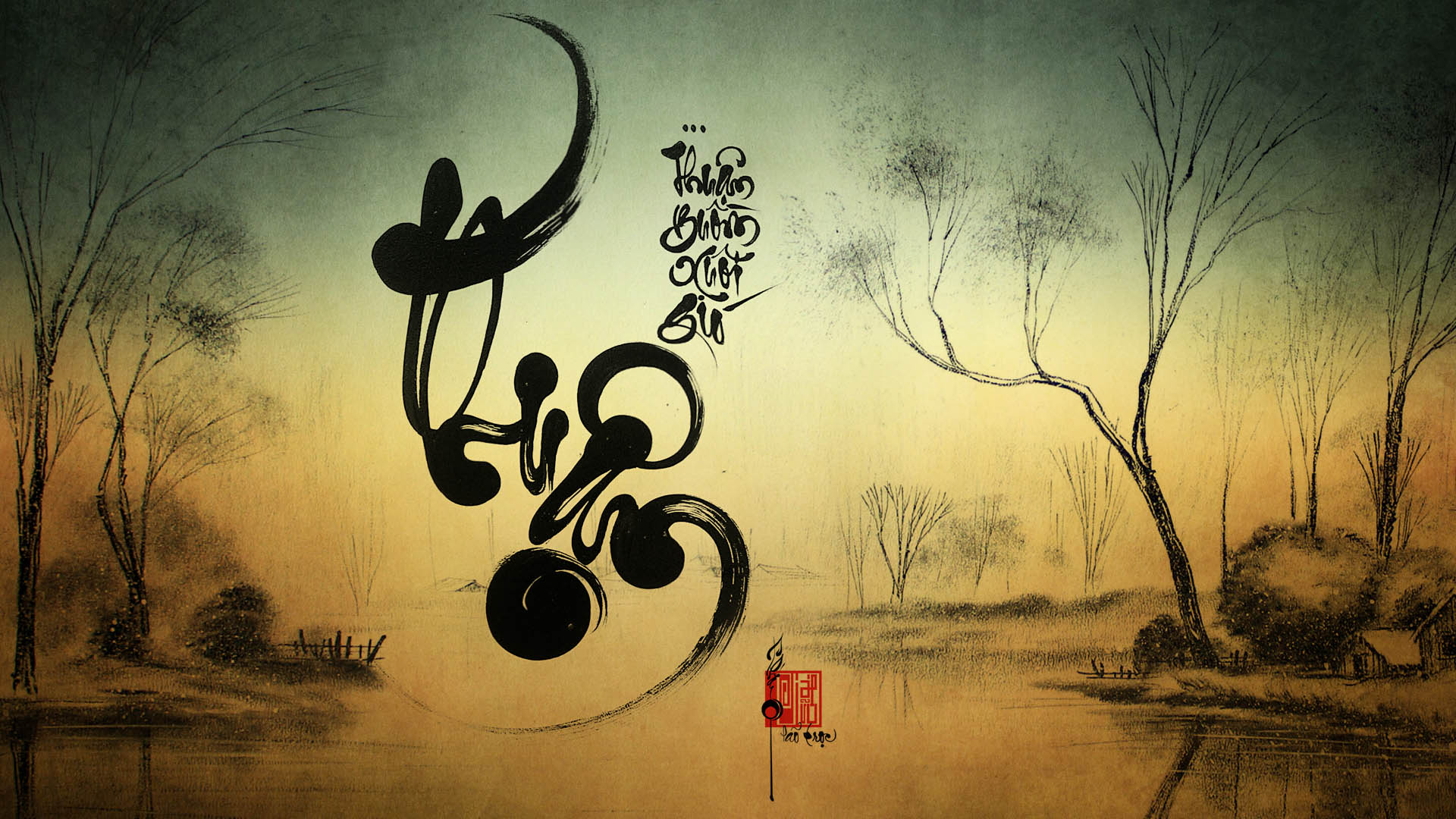
c. Chữ Thảo (Cursive or Freehand)
- Rapid, expressive brushwork
- Harder to read, but emotionally rich
- Often used to express inner feelings or poetic mood
d. Chữ Mộc (Mirror or Reversed Script)
- Written in reverse or mirrored form
- Used in woodblock printing or as artistic puzzles
5. The Philosophy Behind Vietnamese Calligraphy
Vietnamese calligraphy is more than an art form—it’s a philosophy of life. Each stroke is thought to reveal the writer’s inner state, making calligraphy both a personal meditation and a cultural statement.
Key concepts include:
- Tâm (heart or spirit): Writing must come from the heart to be meaningful.
- Tĩnh (stillness): Artists prepare mentally and spiritually before writing.
- Nhẫn (patience): Every stroke requires care and intentionality.
Just like Zen painting in Japan or Chinese ink art, Vietnamese calligraphy encourages mindfulness, humility, and balance between emotion and control.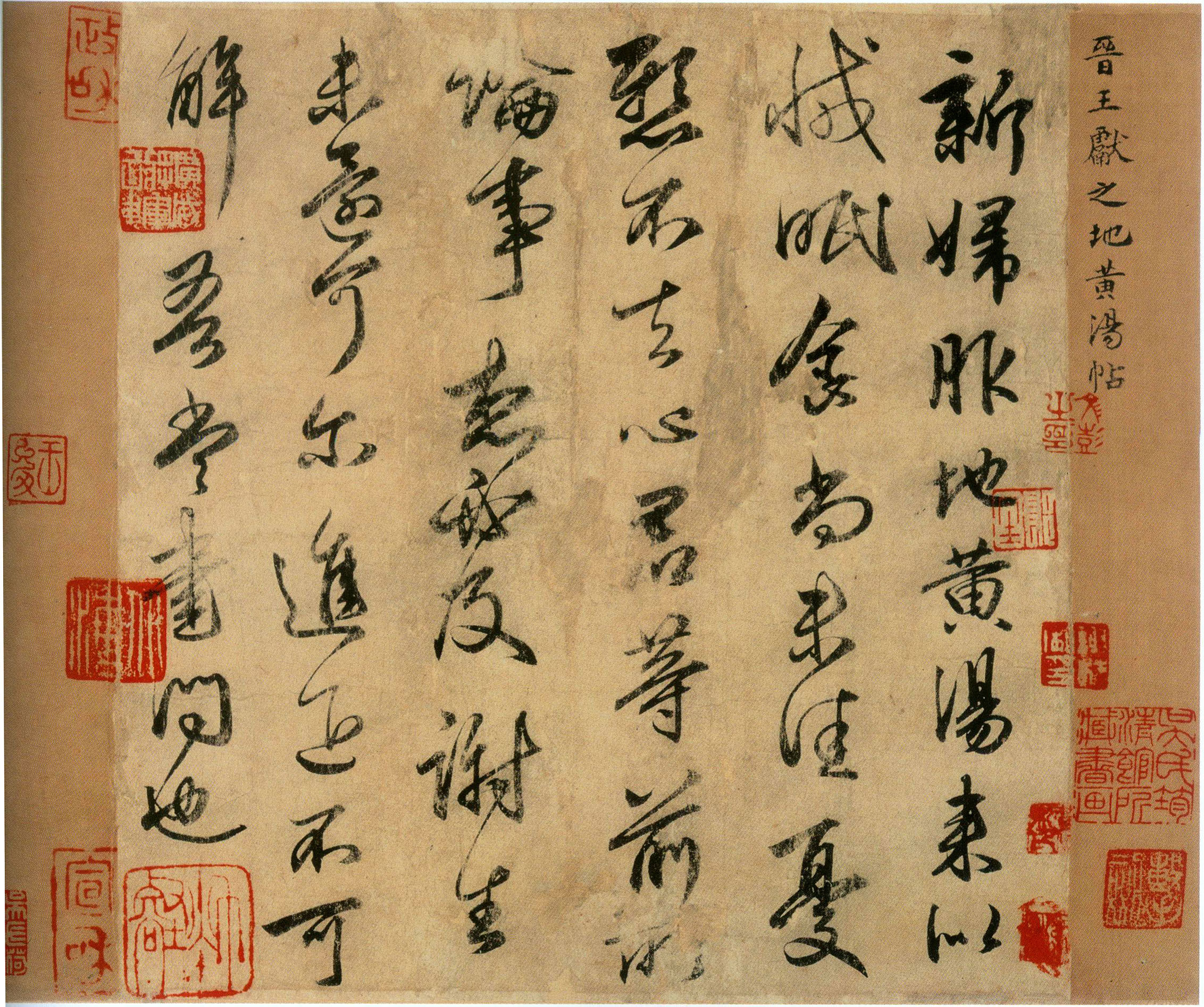
6. Calligraphy in Modern Vietnam
a. A Living Tradition at Lunar New Year (Tết)
During the Lunar New Year, streets across Vietnam transform into open-air calligraphy galleries. Elderly calligraphers, known as ông đồ, sit by temples or markets, offering custom-written scrolls with words like:
- Phúc (Happiness)
- Lộc (Prosperity)
- Thọ (Longevity)
These are gifted to family and friends or used to decorate homes, bringing blessings and positivity for the new year.
b. Growing Popularity Among the Youth
In recent years, young Vietnamese artists have revived interest in calligraphy:
- Calligraphy clubs at universities
- Art festivals and exhibitions
- Social media content and typography projects
- Workshops for tourists and students
c. Integration into Contemporary Design
Vietnamese calligraphy is now found in:
- Logo design
- Fashion (on áo dài and T-shirts)
- Book covers
- Home decor
- Café interiors
Its flexible nature makes it ideal for both traditional and modern aesthetics.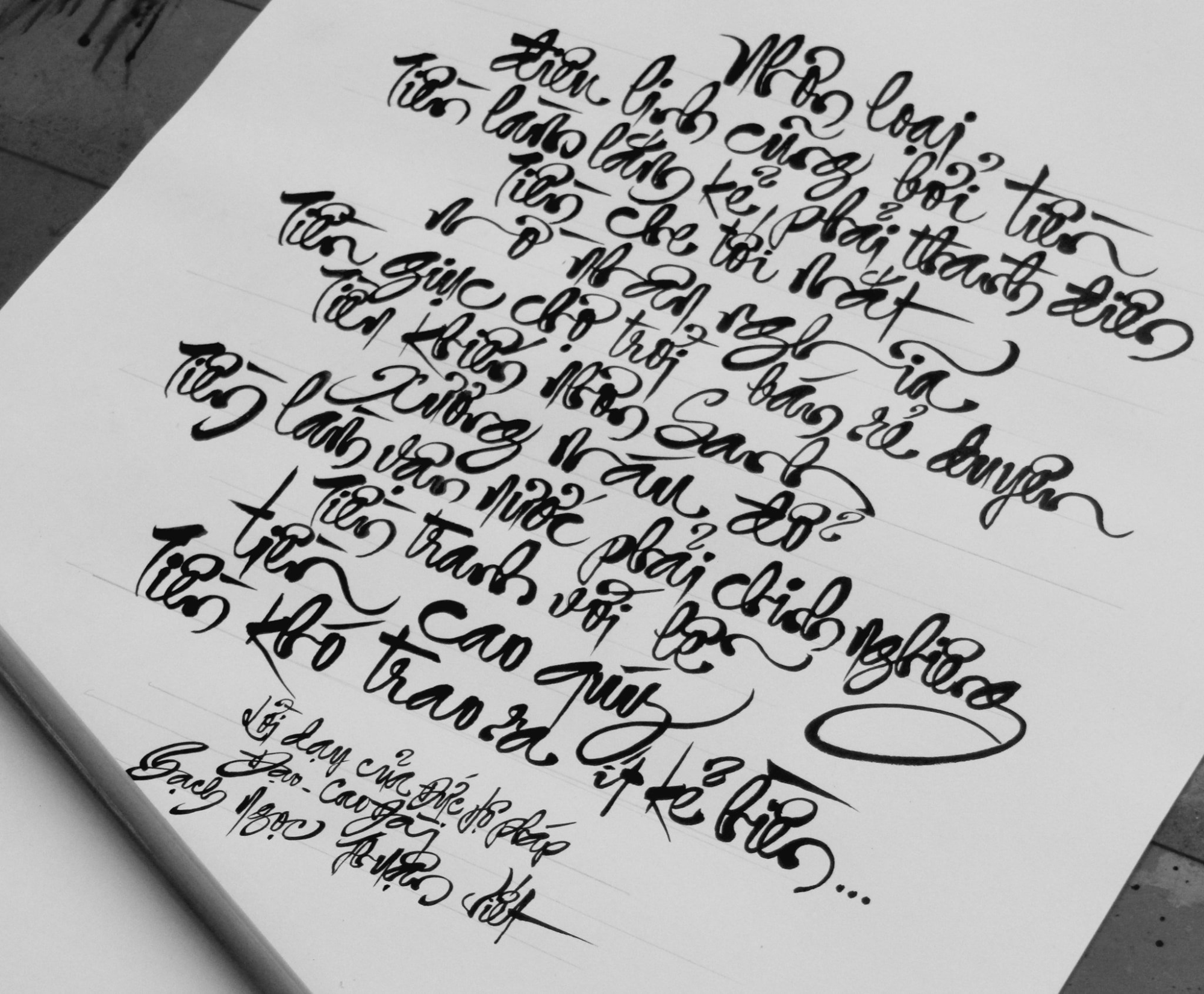
7. Where to Experience Vietnamese Calligraphy
| Location | What to See |
| Hanoi – Văn Miếu (Temple of Literature) | Yearly Tết calligraphy festivals with live performances |
| Hue Imperial City | Royal calligraphy in ancient buildings and temples |
| Ho Chi Minh City Art Galleries | Contemporary calligraphy exhibitions |
| Đà Nẵng Cultural Museums | Displays of both ancient Chữ Nôm and modern calligraphy |
| Traditional Craft Villages | Hand-made calligraphy products on paper, wood, and ceramics |
8. How to Learn or Practice Vietnamese Calligraphy
For foreigners interested in learning Vietnamese calligraphy, several options are available:
- Take a class in Hanoi or Ho Chi Minh City. Many art centers and cultural clubs offer beginner workshops in English.
- Buy a practice kit. Brush, ink, and sample templates can be found in local art stores or online.
- Watch tutorials. Vietnamese artists post content on YouTube, TikTok, and Instagram.
- Join calligraphy communities. Platforms like Facebook or Reddit have global calligraphy groups.
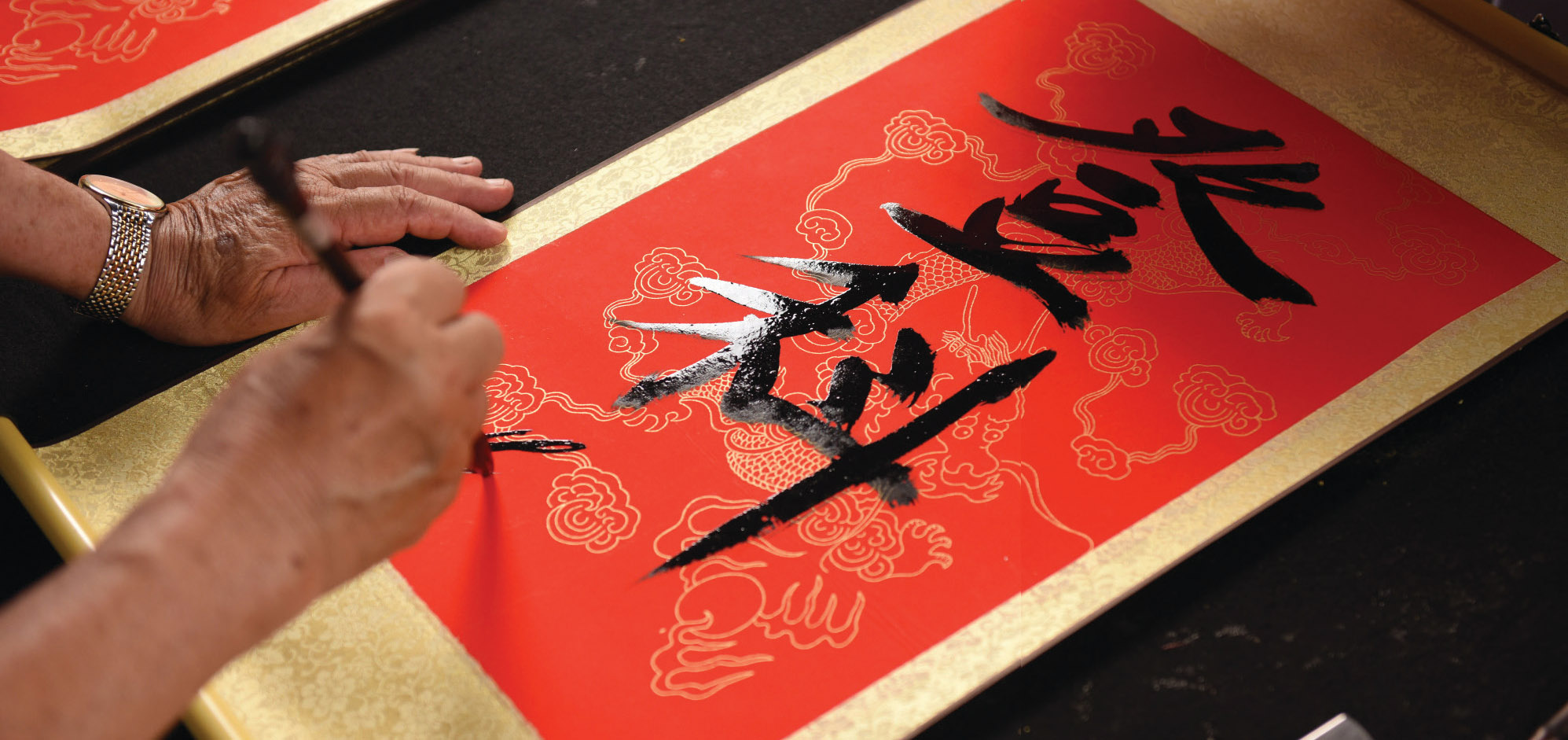
9. Common Phrases in Vietnamese Calligraphy
Here are some popular words and expressions often seen in Vietnamese calligraphy, along with their meanings:
| Vietnamese | Meaning |
| Phúc | Blessing or happiness |
| Tâm | Heart, mind, spirit |
| An | Peace or tranquility |
| Tri thức | Knowledge |
| Hiếu | Filial piety |
| Nhẫn | Patience |
| Tự do | Freedom |
10. Vietnamese Calligraphy vs. Other Calligraphy Traditions
| Country | Script | Artistic Focus |
| China | Chinese characters | Balance, structure, poetic form |
| Japan | Kanji and Kana | Minimalist strokes with Zen influence |
| Arabic World | Arabic script | Geometry, symmetry, and decorative beauty |
| Western World | Latin script | Font-based styles and historical manuscripts |
| Vietnam | Latin-based Vietnamese | Personal, expressive, blending East and West |
11. Why Vietnamese Calligraphy Is Gaining Global Attention
- Cultural uniqueness: It’s one of the few calligraphy forms using a Latin alphabet in an East Asian context.
- Emotional depth: It’s about storytelling, not just form.
- Visual flexibility: From abstract art to minimalist design, it fits many aesthetics.
- Cultural diplomacy: Vietnamese embassies often include calligraphy in cultural events abroad.
Vietnamese Calligraphy – Where Language Becomes Art
In a world of fast communication and typed text, Vietnamese calligraphy invites Vietnam Culture to slow down, reflect, and reconnect with the art of writing. It is more than ink on paper—it’s a dance of meaning, memory, and beauty.
Whether you encounter it at a New Year market, a hidden temple in Hue, or a modern café in Saigon, Vietnamese calligraphy offers a glimpse into the country’s poetic heart and timeless wisdom.
Bring one home. Write one yourself. Let each brushstroke tell a story.
See more post: Vietnamese water puppetry: A living heritage of Vietnam’s artistic soul
